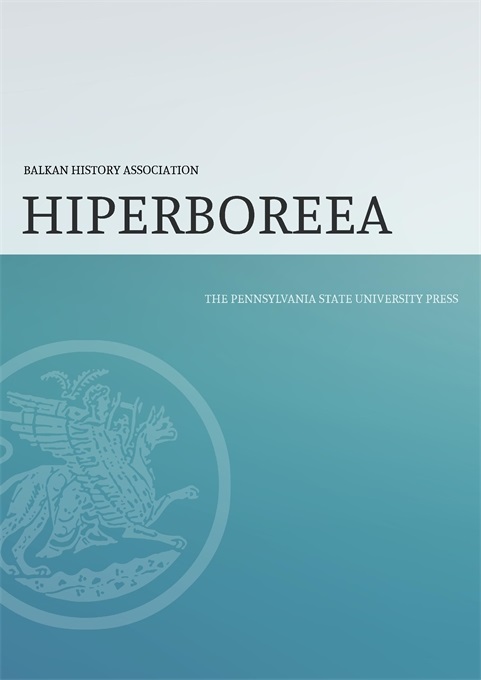The Chronicle of Regino of Prüm is one of the key sources for the history of the late Carolingian empire (c. 900). Written from the perspective of Lotharingia and one of the most important Carolingian family monasteries, it provides us with unique insight into the history of the decline of the Carolingians and their realm. The chronicle maintained its popularity throughout the tenth century, when it was continued by Adalbert, later first archbishop of Magdeburg. Relatively rich manuscript transmission of the text confirms its popularity as well. Among other texts, it was also used by Cosmas of Prague at the beginning of the twelfth century as a model for his chronicle, or became a basis of continuation, which is also part of the translation. The importance of the text supported the need for its English translation, which has now been provided by Simon MacLean, renowned scholar in Carolingian studies, and author of a monograph about Charles III. The volume appears in a well-known and useful Manchester series of translations predominantly focused on medieval narrative sources.
The translation includes an extensive introduction of Regino´s life and work, which also places his story and texts into the context of the late Carolingian culture and politics. Regino is introduced not just as a historian, but also active participant in the politics of Lotharingia, being abbot of the important and rich Carolingian monastery Prüm from influential local aristocratic family with links to the Carolingian dynasty. His position, personal and institutional, impacted his fall – as he was indirectly involved in politics, he became a victim of power struggles among the aristocratic kindreds after the death of king Zventibold of Lotharingia and was pushed from his office and replaced by Richar. He later found refuge with archbishop Ratbod of Trier, who installed Regino as an abbot in the monastery of St.-Martin in Trier. Regino wasn’t an author of just one book – during his Prüm abbacy, he organized surveys of extensive monastic estates that still provide us with much valuable information about estate management during the Carolingian era. He also penned a treatise on music, De harmonica institutione, and compiled for his patron, archbishop Ratbod an introduction to the contemporary canon law De synodalibus causis. All of his texts, including the chronicle, were, according to MacLean, intended to improve Regino´s position in contemporary power networks and the chronicle was written as a guide for young Louis IV, the heir to the throne, as well as for his advisors. Through a series of short cautionary and exemplary narratives, mostly related to princes, the chronicle provided Louis IV with examples of good and bad behavior. The chronicle reveals a well-identifiable set of characteristics of an ideal ruler in Regino´s perspective. It also presents Magyars, perceived as an immediate threat in his time, as beatable enemies, and thus provides the intended audience with an optimistic perspective.
MacLean discusses the date of compilation of the chronicle. According to him, it was finished in 908. As it names king Zventibold dead, it must have been written after 900. MacLean is convinced that its compilation is related to the compilation of De synodalibus causis (906). In several manuscripts, it is possible to track authorial changes primarily related to Regino´s deposition.
Although the chronicle is usually labeled as a “world chronicle,” MacLean stresses its specifics within the genre that were not among the most popular in the Carolingian era – there are only four world chronicles written in that time following completely different goals. It is also just one of the two in its genre before 950, which begins with the birth of Jesus Christ instead of with the Creation of the world. Therefore, it is not framed either by the six ages of St. Augustine, or Isidore of Sevilla, nor by four empires. Its scope exceeds local horizons – there is no specific focus on Trier or Prüm in the chronicle, but their heroes are Franks and Carolingians and the rise and fall of their kingdom is placed in a wider context. Instead of world chronicles, Regino found inspiration in the Annales regni Francorum, and some of his main sources were Bede, Paul the Deacon, Pompeius Trogus, and Justin. Another rich source of information was the monastic memory.
Lastly, MacLean also provides the reader with an interesting insight into Regino´s methodology and sources. Regino weighted the witnesses, but he allegedly differentiated between the information gained through his own experience and mediated information. Whether it was mediated orally, or through a written record was in his eyes of no importance. Some of the stories he took over were evidently recorded in the monastery, and some of them were transmitted through the extensive networks related to the vast monastic estates with several enclaves in relatively distant regions, such as Brittany. An important source here was most probably the survey of monastic estates finalized during Regino´s abbacy.
His continuator, archbishop Adalbert of Magdeburg, also belonged to the top echelon of the contemporary elites. He started his career in St.-Maximin, Trier, acted as a missionary bishop in Rus´ and as an abbot of prestigious monastery in Wissenbourg before being installed in the newly established Magdeburg metropolitan seat. He decided to continue Regino´s chronicle after three generations, during his Wissembourg abbacy (966-8). The notes inserted into Regino´s text and related to Trier especially establish Adalbert’s authorship. Though, his focus is – like in Liutprand´s Antapodosis, or in Widukind´s Gesta – on the Ottonian dynasty – and his continuation is the story of translatio imperii ad Saxones.
The translation is based on the standard edition published by F. Kurze in MGH (1890), although Maclean is aware of its flaws. He agrees with W.R. Schleidgen, who thoroughly analyzed Regino´s chronicle´s manuscript transmission, and found that the inaccurate reconstruction of the stemma did not affect the qualities of the editions except the record to AD 892 and the list of martyrs in Book I. Maclean finds inspiring Schleidgen´s conclusion that the spread of the manuscripts should be read based on a geographical key and that the chronicle was transmitted through the networks of the monastery Gorze and its famous reform movement.
For the translation of the chronicle, Maclean decided to prefer proximity to the original over fluidity. Nevertheless, his translation is readable. Taking in consideration a well-arranged foot-notes apparatus, History and Politics in Late Carolingian and Ottonian Europe provides the reader with a detailed, but user-friendly introduction to Regino´s life and work, and the translation is of very good quality and can be used as a starting point for anyone interested in late Carolingian historiography and politics.
David Kalhous, PhD, Associate professor, Department of Auxiliary Historical Sciences and Archive Studies, Masaryk University, Brno, Czech Republic


